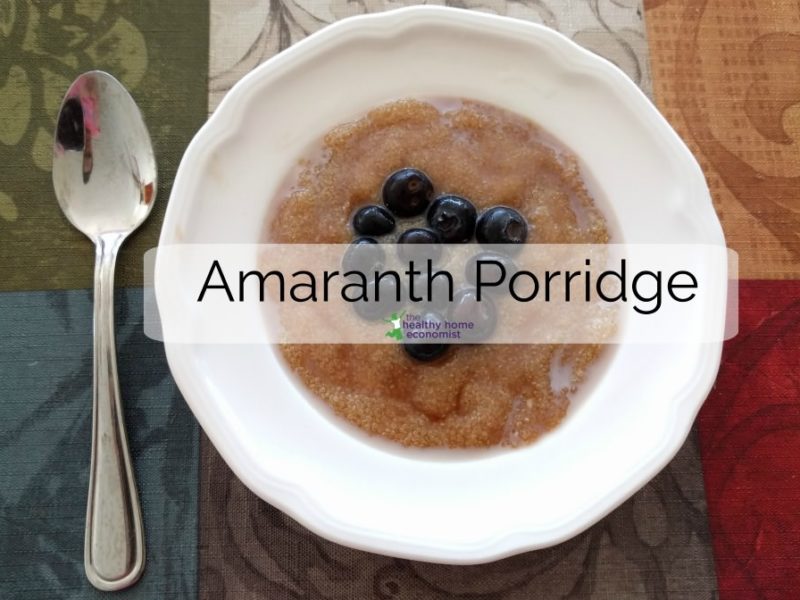
Amaranth is an ancient gluten-free seed (pseudo-grain) that is growing immensely in popularity. The trouble is most folks who want to eat it have no idea how to prepare it.
The seeds are too tiny for most grain grinders, which leaves the whole grain itself as the most practical way to get started using it in the kitchen.
Until you have the funds for a specialty appliance that can grind tiny amaranth seeds into flour (I don’t recommend store-bought flour as it is usually nutritionless and even rancid), amaranth porridge is the most practical way to go.
Amaranth for Breakfast
Because the seeds are so small, amaranth makes a delicious, creamy porridge very similar in consistency to soaked millet, buckwheat, or teff porridge. The taste is similar to teff as well – a mild nuttiness that is very pleasant.
The key is that amaranth should be soaked first as the seeds are high in anti-nutrients like tannins and saponins. The process is very similar to overnight oats. However, amaranth is more of a seed than a true grain. So, I use a soaking medium of filtered water and a small amount of sea salt instead of whey, lemon juice, or apple cider vinegar.
Then, thorough cooking on the stove renders it fully digestible. Most notably, the excellent protein profile will be more fully metabolized when careful preparation methods are followed. Dress it up in a bowl with your favorite healthy fat, whole sweetener or fruit, and other toppings.
Here’s how I make and enjoy it in my home.
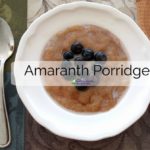
Traditional Amaranth Porridge Recipe
Classical recipe for amaranth porridge best enjoyed for breakfast hot in a bowl with your choice of healthy fat, whole sweetener and nuts or fruit topping.
Ingredients
- 1 cup whole grain amaranth preferably organic
- 3 cups filtered water
- 1/2 tsp sea salt
Instructions
-
Place amaranth seeds in a small pot and mix in half (1.5 cups) the filtered water and 1/2 tsp sea salt. Cover and leave on the counter for a minimum of 5 hours or overnight.
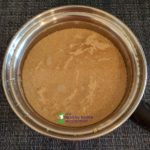
-
Drain off the soaking water and rinse the seeds well.
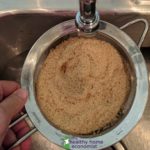
-
Place the seeds back into a clean small pot and pour in the remaining 1.5 cups of water. Bring to a boil uncovered, stir well, cover and reduce heat to a simmer for 10 minutes.
-
Remove from heat, uncover and stir amaranth porridge to enhance smoothness.
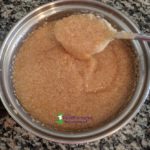
-
Serve in bowls with your favorite healthy fat, whole sweetener and other toppings. I enjoy a half tablespoon of butter, whole grassfed raw milk, and a drizzle of date syrup.
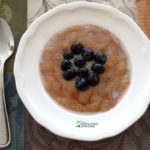
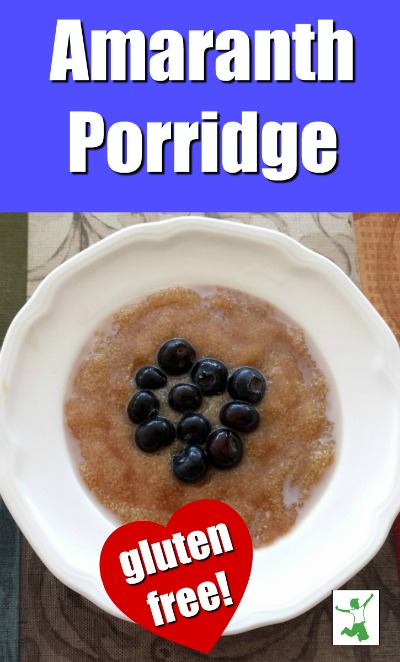








Thanks for your advice on preparation of amaranth. I’m going to do it that way now. By the way, just for fun, I grew an amaranth plant from seed in my garden. Produces lots of seeds, yes, but not easy to thresh & clean.
Thankyou for sharing your recipe, one question, does this preparation remove the lectins (besides the antinutrients saponins and tannins that you mentioned)? Would you consider this porridge as safe (in terms of antinutrients, enzyme inhibitors, etc.) for daily consumption? Thanks in advance.
Hi! I made this as directed, and the result was very congealed, more like a chia seed pudding than a porridge. Is this the expected consistency? Thank you!
The result is very much the consistency of cream of wheat or cream of rice as you can see from the photo.
I assume that you use this method for teff , quinoa
and buckwheat? I’ve always used ACV or lemon.
What issue does that cause over using salt? What
about beans / lentils? Also, as I use hot water to
soak grains, the teff, in particular, will shed some
of the dark coating as well as a cloudy substance.
Is this a result I want from soaking? Also, when
do I soak with ACV, Lemon or whey? With flour?
Could I ever rotate with lime for the acid?
I read much conflicting info and suggestions
on the internet, it would be nice for it to be
cleared up. I know I want more digestibility,
w/ minimal anti-nutrients, but we also want
some phytates, too. Where is the balance?
The reason use salt instead of whey is because teff, amaranth, quinoa and buckwheat are SEEDS they are not technically grains. Seeds (like pumpkin seeds, sunflower seeds) are best soaked in brinewater. Hope that helps.